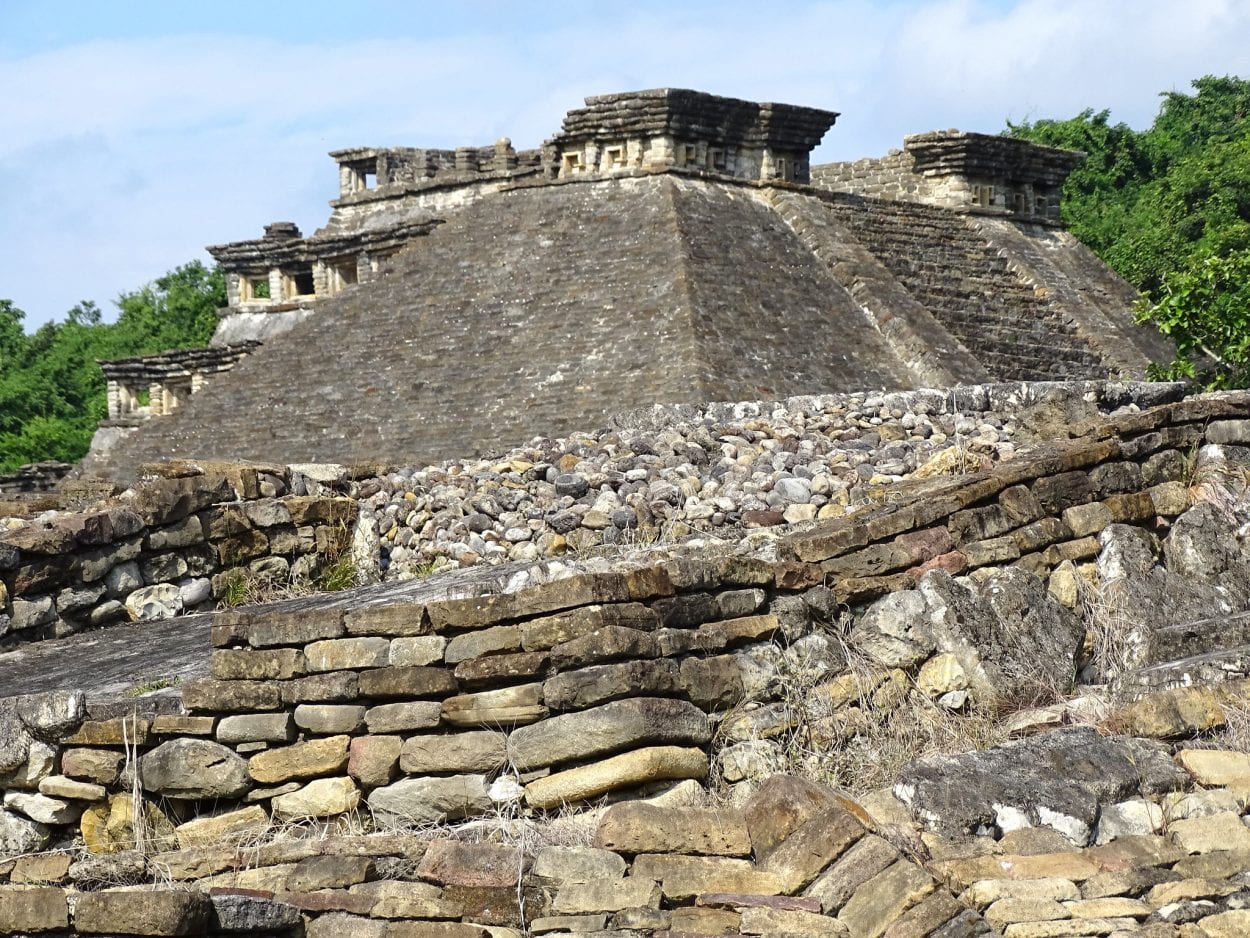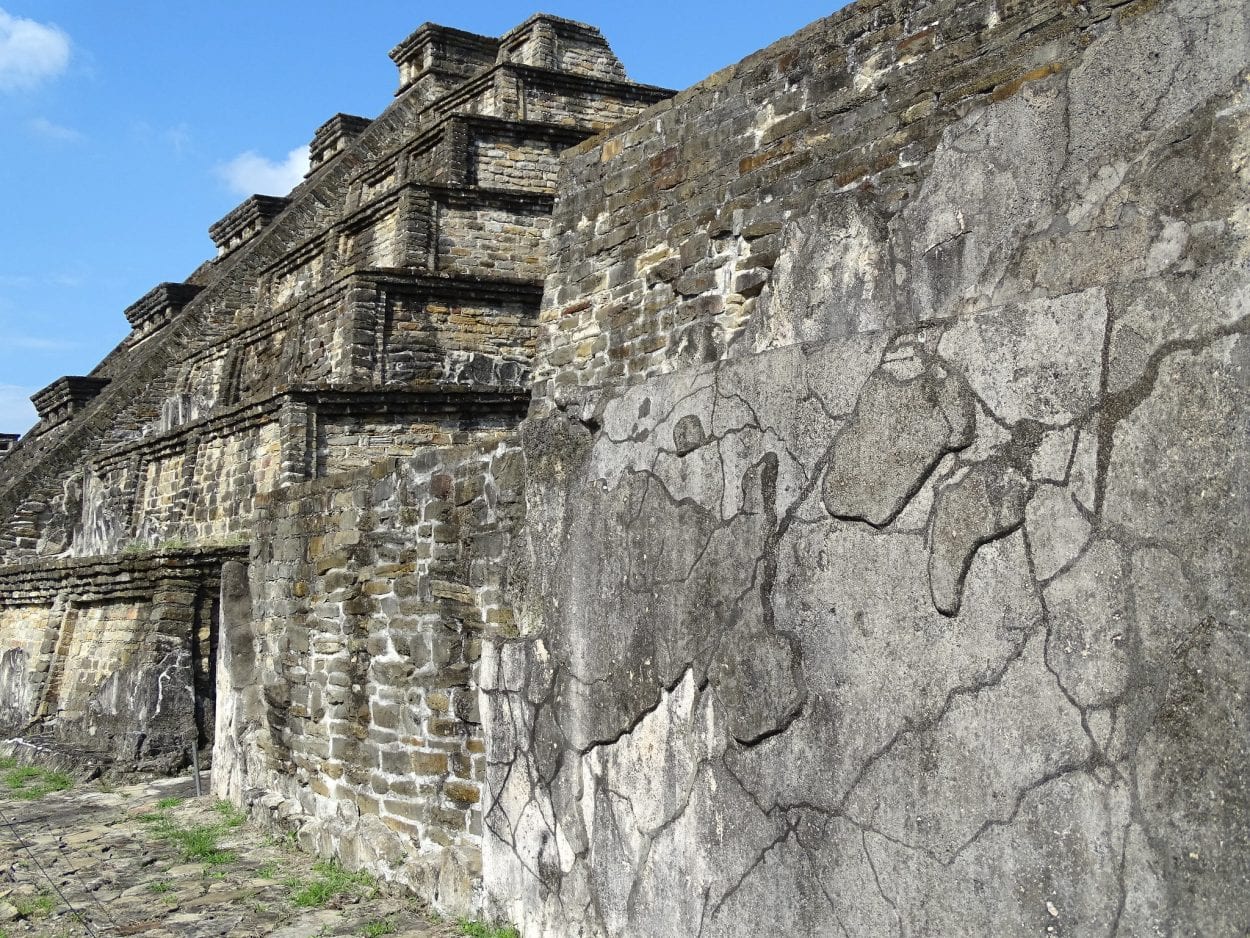El Tajín is an archaeological site and ancient city of the Classic era of Mesoamerica, located in the highlands of the municipality of Papantla in Mexico.
El Tajín, named after the Totonac rain god and meaning “of thunder or lightning bolt” was first occupied around 5600 BC by nomadic hunters and gatherers that evolved into sedentary farmers.
The first city builders are contested by archaeologists, with some theories suggesting the Totonacs and the Xapaneca, or possibly the Huastec around AD 100. By AD 600, the site had grown into a large urban complex with monumental construction, due in part to El Tajín’s strategic position along the old Mesoamerican trade routes controlling what is now the modern-day Veracruz state.
The city comprises of numerous temples, plazas, palaces, ballcourts, and pyramids, with the most notable being the Pyramid of the Niches (named for the approximately 365 recesses on its four sides).

Most of the city’s inhabitants lived in the surrounding hills, obtaining their produce and foodstuffs from the Tecolutla, Nautla and Cazones areas. These fields not only produced staples such as corn and beans but luxury items such as cacao.
El Tajín reached its peak around the fall of Teotihuacan, where many cultures saw a widespread social collapse and migration, resulting in the abandonment of many urban and population centres at the time.
The city began to have extensive influence starting around this time, which can be best seen at the neighboring site of Yohualichan, whose buildings show the kinds of niches that define El Tajin. Evidence of the city’s influence can be seen along the Veracruz Gulf coast to the Maya region and into the high plateau of central Mexico. El Tajín continued to prosper until the 13th century AD, when the city was destroyed, possibly by the Chichimecs that resulted in the city becoming abandoned.

Although most probably known to the local inhabitants of the region, the city was rediscovered in 1785 by Diego Ruiz who stumbled upon the Pyramid of the Niches, whilst looking for clandestine tobacco plantings.
El Tajín was inscribed as a World Heritage Site in 1992, because of its historical significance and architecture and engineering.
Header Image Credit : Gary Todd – Public Domain





